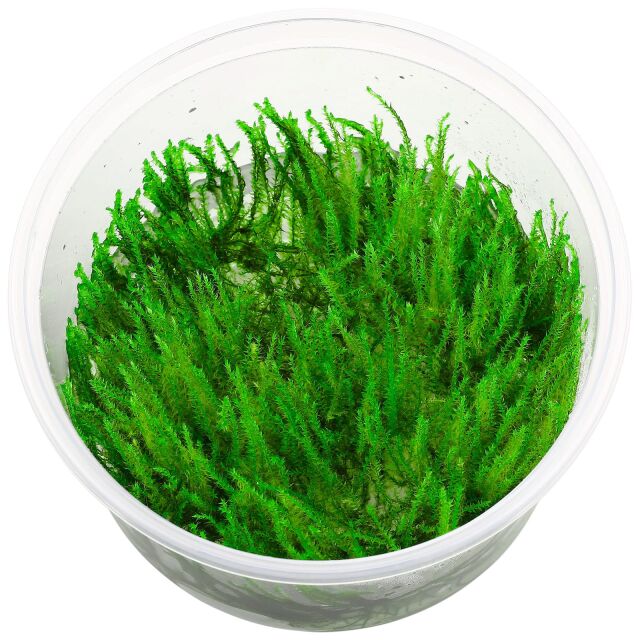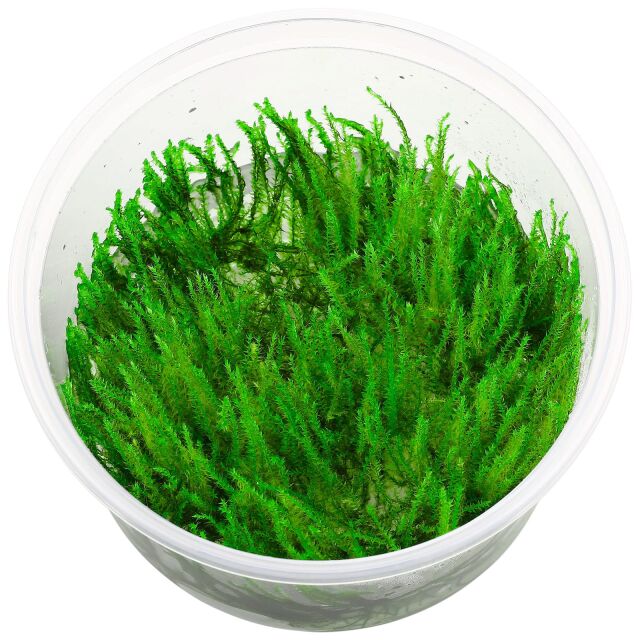Singapore moss



Vesicularia dubyana
Singapore moss
- Undemanding aquarium moss
- Ramified growth
- Resembling a forest moss
- Attaches well to the substate
Sign in or Register
Item question
We’re here for you!
Please enter your question and e-mail and we’ll contact you as soon as possible. It usually takes us up to 24 hours during business days to respond.
Thank you for your question!
Thank you, we’ll get in touch!
Close window
You already sent us a question.
Please wait a few minutes
Description
Vesicularia dubyana was the first tropical aquarium moss ever, originally called "Java moss". It is widespread in tropical Asia where it occurs in moist habitats and in water. Later a different moss, Taxiphyllum barbieri, was taken for this species and was spread as Java moss in the aquarium hobby. Today the true Vesicularia dubyana is rather known under the name "Singapore moss".
It grows more or less horizontally, attaching itself to hard substrates such as wood or rock. It resembles the Christmas moss, Vesicularia montagnei, but has more delicate and less ramified shoots. Compared to Taxiphyllum barbieri, it has a more compact habit and grows a little slower. Not rarely spore capsules (sporogons) appear on this moss, also when it grows submerged.
Vesicularia dubyana has little demands, still growing with few light, however it looks best with at least medium lighting and good CO2 and nutrient supply. It is best attached to rock or driftwood and can also be used for moss walls. Too big stands should be reduced by cutting or careful plucking before they got detached from the substrate.
This "true Java moss", known for many decades, is a versatile moss for the hardscape. With its fine, ramified shoots and occasionally appearing sporogons, it resembles a forest moss and is especially suitable for layouts with a natural appearance.
The name Vesicularia dubyana has been a household word in aquaristics for over 50 years, and it is closely linked to the vernacular name "Java moss". However, nowadays, much confusion has arisen around these names.
The moss known as Java moss, or "V. dubyana", popular in all the world today, can frequently be identified as another species: Taxiphyllum barbieri. This was stated as early as 1982 by Japanese moss expert Zennosuke Iwatsuki and made known to the aquarium hobby in general several years ago (Benito C. Tan & al. 2004). Taxiphyllum barbieri was presented as true name for Java moss. The moss aquarists in Singapore call "Singapore moss" was identified as true Vesicularia dubyana.
In Europe, the moss first imported as Java moss, though, was indeed Vesicularia dubyana. The species can be clearly discerned on photos in older aquarium literature. (read more)
| Common names | Java moss, Singapore moss |
| Complete botanical name | Vesiculária dubyána (Müll. Hal.) Broth. |
| Family | Hypnaceae |
| Genus | Vesicularia |
| Difficulty | easy |
| Usage | Epiphyte (growing on hardscape), Plant for spawning, Nano tanks |
| Growth | slow |
| pH value | 5 - 8 |
| Temperature tolerance | 4 - 32°C |
| Carbonate hardness | 0 - 21°dKH |
| General hardness | 0 - 30°dGH |
| Propagation | Splitting, cutting off daughter plants |
| Can grow emersed? | yes |
| Source | Flowgrow |
| Common names |
| Java moss, Singapore moss |
| Complete botanical name |
| Vesiculária dubyána (Müll. Hal.) Broth. |
| Family |
| Hypnaceae |
| Genus |
| Vesicularia |
| Difficulty |
| easy |
| Usage |
| Epiphyte (growing on hardscape), Plant for spawning, Nano tanks |
| Growth |
| slow |
| pH value |
| 5 - 8 |
| Temperature tolerance |
| 4 - 32°C |
| Carbonate hardness |
| 0 - 21°dKH |
| General hardness |
| 0 - 30°dGH |
| Propagation |
| Splitting, cutting off daughter plants |
| Can grow emersed? |
| yes |
| Source |
| Flowgrow |
How many plants do I need?
General information
Please choose a variant to see more information.
| Item no. |
|
| EAN | |
| Weight | |
| Shipping weight |
Customers ask customers
You have questions about this product? Ask other customer or our support team about this product!
Customer reviews
One review
| 5 Stars(1) |
|
| 4 Stars(0) |
|
| 3 Stars(0) |
|
| 2 Stars(0) |
|
| 1 Star(0) |
|